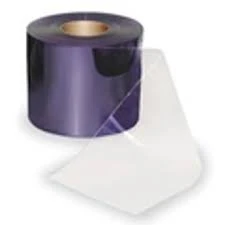- Afrikaans
- Albanian
- Amharic
- Arabic
- Armenian
- Azerbaijani
- Basque
- Belarusian
- Bengali
- Bosnian
- Bulgarian
- Catalan
- Cebuano
- Corsican
- Croatian
- Czech
- Danish
- Dutch
- English
- Esperanto
- Estonian
- Finnish
- French
- Frisian
- Galician
- Georgian
- German
- Greek
- Gujarati
- Haitian Creole
- hausa
- hawaiian
- Hebrew
- Hindi
- Miao
- Hungarian
- Icelandic
- igbo
- Indonesian
- irish
- Italian
- Japanese
- Javanese
- Kannada
- kazakh
- Khmer
- Rwandese
- Korean
- Kurdish
- Kyrgyz
- Lao
- Latin
- Latvian
- Lithuanian
- Luxembourgish
- Macedonian
- Malgashi
- Malay
- Malayalam
- Maltese
- Maori
- Marathi
- Mongolian
- Myanmar
- Nepali
- Norwegian
- Norwegian
- Occitan
- Pashto
- Persian
- Polish
- Portuguese
- Punjabi
- Romanian
- Russian
- Samoan
- Scottish Gaelic
- Serbian
- Sesotho
- Shona
- Sindhi
- Sinhala
- Slovak
- Slovenian
- Somali
- Spanish
- Sundanese
- Swahili
- Swedish
- Tagalog
- Tajik
- Tamil
- Tatar
- Telugu
- Thai
- Turkish
- Turkmen
- Ukrainian
- Urdu
- Uighur
- Uzbek
- Vietnamese
- Welsh
- Bantu
- Yiddish
- Yoruba
- Zulu
Exploring the Benefits and Applications of Flexible PVC in Modern Industries
Understanding Flexible PVC Properties, Applications, and Benefits
Flexible polyvinyl chloride (PVC) is a widely used plastic known for its versatility and adaptability across various applications. Its unique properties make it an essential material in numerous industries, ranging from construction to automotive and beyond. This article delves into the characteristics, applications, and benefits of flexible PVC, highlighting why it remains a popular choice in today’s market.
Properties of Flexible PVC
Flexible PVC is distinguished by its elasticity and resilience. Unlike rigid PVC, which is hard and brittle, flexible PVC is softened through the incorporation of plasticizers, such as dioctyl phthalate. This modification allows flexible PVC to bend and stretch while maintaining its structural integrity. Its flexibility is complemented by other notable properties, including
1. Chemical Resistance Flexible PVC is resistant to a wide range of chemicals, making it suitable for applications in environments that may expose it to harsh substances.
2. Weather Resistance This material can withstand various weather conditions, including UV radiation, moisture, and extreme temperatures, making it ideal for outdoor uses.
3. Lightweight and Durable Flexible PVC is lightweight, which reduces shipping costs and makes handling easier. Despite its lightness, it is durable and can last for many years, even under stress.
4. Easy to Fabricate This material can be easily cut, welded, or molded into different shapes, allowing for a wide range of design possibilities.
5. Cost-Effectiveness Compared to other plastics and materials, flexible PVC is often more affordable, making it an attractive option for manufacturers and consumers alike.
Applications of Flexible PVC
Flexible PVC has found its way into numerous industries due to its advantageous properties. Some of its common applications include
1. Construction Flexible PVC is used in flooring, roofing membranes, and wall coverings. Vinyl flooring, for instance, is popular in both residential and commercial settings for its ease of maintenance and design variety.
flexible pvc

2. Automotive In the automotive industry, flexible PVC is used for dashboards, wire insulation, and trim components. Its durability and resistance to chemicals and moisture make it ideal for these applications.
3. Healthcare Flexible PVC is widely used in the medical industry for products such as tubing, IV bags, and medical packaging. Its biocompatibility and ease of sterilization are critical in healthcare environments.
4. Electrical Due to its excellent insulating properties, flexible PVC is utilized in electrical cables and wiring. Its flexibility allows it to adapt to different installation requirements.
5. Consumer Goods Many everyday products, such as inflatable toys, raincoats, and waterproof bags, are made from flexible PVC. Its ability to be easily printed on also makes it a popular choice for promotional materials and banners.
Benefits of Using Flexible PVC
The advantages of using flexible PVC extend beyond its physical properties. Here are a few key benefits
1. Sustainability Recent advances in PVC recycling technologies have made it easier to recycle flexible PVC products, reducing waste and promoting sustainability in manufacturing.
2. Versatile Design Options Flexible PVC can be produced in a variety of colors, textures, and finishes, allowing designers and manufacturers to create products that meet specific aesthetic and functional needs.
3. Safety Compliance Many flexible PVC products are designed to meet safety standards, making them suitable for use in sensitive environments like healthcare and food service.
4. Environmental Resistance Its resistance to moisture and UV light ensures longevity in outdoor applications, reducing the need for frequent replacements and minimizing environmental impact.
Conclusion
In summary, flexible PVC is a remarkable material that combines versatility, durability, and cost-effectiveness. Its widespread applications across various sectors underscore its importance in modern manufacturing and design. As sustainability becomes increasingly crucial in material choice, flexible PVC is positioned to remain a leading solution in numerous industries for years to come.
-
Plastic Curtain for AC – Energy Saving & Easy Installation Perfect for Room and Freezer UseNewsJul.04,2025
-
Industrial Strip Curtains - Durable PVC & Plastic Solutions for Industrial DoorsNewsJun.24,2025
-
PVC Curtain Strip – Durable Standard PVC Strips for DoorsNewsJun.10,2025
-
PVC Strip Curtain – Durable & Transparent Plastic Strips for Industrial Use Affordable PricesNewsJun.10,2025
-
Clear Plastic Door Curtains Durable & Insulating VisibilityNewsJun.09,2025
-
Commercial Strip Curtains Energy Savings & Durability for Industrial UseNewsJun.09,2025



